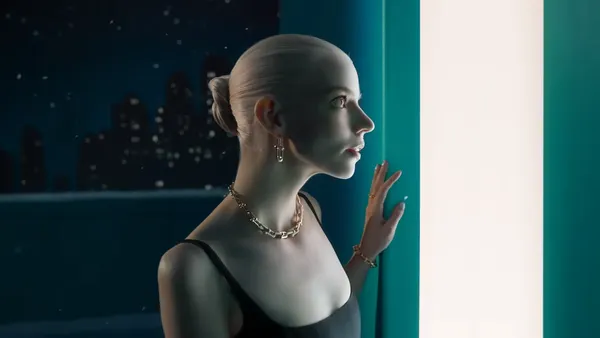Dive Brief:
- Consumers are quick to identify video ads made with generative artificial intelligence (AI) — and aren’t enthused about what they see, according to new research from NielsenIQ (NIQ).
- AI-generated creative was consistently assessed as more “annoying,” “boring” and “confusing” than ads made through traditional methods. Even AI output deemed high quality did not leave as strong an impression, pointing to a gap between the content and existing memory structures.
- Low-quality AI ads still effectively communicated brand associations but proved cognitively taxing and distracting to viewers. The findings follow several high-profile publicity blunders tied to AI in marketing this year.
Dive Insight:
Marketers seem firm in their commitments to ramp up generative AI experimentation, but the industry hype may not match consumer sentiment. NIQ’s research, which was conducted using surveys as well as methodologies like eye tracking and implicit response time, found that even the most polished AI-generated ads cause a degree of dissonance in viewers while being less memorable than conventional advertising.
The upshot is that AI-generated ads risk damaging a sense of authenticity — a desirable trait in marketing — while creating a negative halo effect around a brand that could dampen perceptions beyond an individual campaign. NIQ will present further on the topic at the Consumer Electronics Show in Las Vegas next month. The company did not name any of the efforts assessed for the report.
“Brands and agencies are innovating at a rapid pace, leveraging AI-generated content in their advertising,” said Ramon Melgarejo, president of strategic analytics and insights at NIQ, in a statement around the research. “They need to be cautious, as our study reveals that consumers are quite sensitive to the authenticity of ad creatives, both at the implicit (nonconscious) and explicit (conscious) levels.”
The level of investment flowing into generative AI has been astonishing, with marketing no exception. Agencies have pledged to spend hundreds of millions of dollars to level up their AI know-how while brands continue to integrate the technology into large campaigns. But AI-generated creative remains a testy topic despite tools like ChatGPT becoming commonplace.
Coke’s recent holiday commercials made with AI caused controversy, as did an effort earlier this year from Toys R Us that boasted the first brand video to use OpenAI’s text-to-video tool, Sora. AI-generated assets have started receiving negative monikers like “slop,” and NIQ’s findings emphasize that consumers’ brains struggle to process what they’re looking at, distracting from the message of a campaign and causing an uncanny valley effect. Many AI-generated videos feature actors with limited movement and facial expressions, along with odd editing rhythms and a distinctive shiny look.
AI does wield some strengths, namely that it can easily draw out implicit brand associations. NIQ also acknowledged that AI video tools are likely to get more sophisticated, which could address some of the frustrations viewers currently experience in regard to realism.
“Even the lowest quality AI-generated ads were able to successfully convey the intended brand identity,” the NIQ report reads. “Each of these ads was able to strengthen the mental network of associations for their respective brands at a strong level…”
That said, marketers in the near term may want to focus on lower-risk use cases for the technology, such as early stage ideation, storyboarding and creative versioning.














